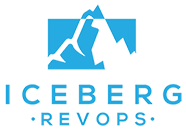Table of Contents
It’s time to focus on the customer, not the sale
Today, having an innovative product or an unbeatable price is great, but it’s not enough to capture market share. Customers rightly expect – and deserve – more. It’s not just about what you’re selling, but how you’re selling it. A telling study by Salesforce underscores this evolution: 85% of business buyers and 79% of consumers say the experience a company provides is as important as its products and services. This signals a profound shift in consumer thinking, placing the overall brand experience at the heart of purchasing decisions. Customers want to feel that companies understand them, that they are not just another data point in your CRM. And beyond the what and how, you also need to think about why you’re bringing your products and services to market. What’s the real goal here? Is it just about the win, or about solving a genuine problem for your customers? This is where customer-centricity begins.
Primer: What is customer centricity?
Why customer-centric sales processes matter
When businesses genuinely understand and address their customers’ needs and challenges, they position themselves for stronger growth. Studies show that customer-centric companies are 60% more profitable than their non-customer-centric counterparts. But are businesses truly aligning with customer expectations? Two in three (66%) customers expect businesses to understand their unique needs and expectations. But the reality paints a different picture. Only one in three companies (34%) are getting this right. To bridge this gap in your business, you need a to truly understand your buyers. A good starting point is crafting an Ideal Customer Profile (ICP).
What is an Ideal Customer Profile (ICP)?
How do your most valuable customers differ from the rest?
If you’re scratching your head on this one, it’s time to take a fresh look at your ICP Framework – or start building one if it’s missing from your go-to-market toolkit.
To put it simply: your ICP paints a picture of the type of account that views your product or service as the perfect answer to their problems.
While the ICP is theoretically constructed from ideal customer traits, it’s not just a conceptual tool – it’s a foundational decision-support framework for everyone in your company.
The power of a well-defined ICP
With a clear ICP, you:
- Understand your ideal customers, their needs, and how your product serves them.
- Move closer to achieving perfect “product-market fit,” where your product aligns with market demand, fueling growth.
- Experience faster sales, better conversion rates, and longer customer relationships.
- Align all teams – marketing, sales, customer success, and leadership – around prime opportunities.
- Equip sales with scalable, repeatable processes to target and convert key accounts effectively.
Your ICP is core to your game plan. It should be more than just a topic in your onboarding training or a note in your marketing plans. It needs to be embedded into daily operations.
Without a well-defined ICP, you risk focusing on opportunities that won’t materialize into sales. That’s both time and money lost.
An ICP lets you swiftly qualify (or disqualify) prospects and allocate resources more strategically. When a new prospect aligns perfectly with your ICP, you can dive in with full confidence. Companies not perfectly aligned might still hold potential but anticipate a lengthier sales cycle and a decreased probability of a closed-won.
Strategies for defining your ICP
Developing an accurate and actionable ICP goes beyond just brainstorming. It requires a foundation of actionable, meaningful information that combines both qualitative insights and quantitative data to paint a multi-dimensional profile.
To achieve a holistic perspective, it’s worth rallying the entire organization. By including insights from teams beyond just sales, marketing, and customer success, you tap into a treasure trove of knowledge spanning various facets of the business.
Evaluating past successful deals offers another gold mine. Analyze your closed-won deals to identify patterns and shared attributes. Highlight those customers who’ve delivered the most value, as determined by your business objectives, and look for underlying similarities.
Examples of valuable attributes include:
- Quick closing times
- Low customer acquisition costs (CAC)
- Ease of partnership
- High customer satisfaction
- High frequency of renewals and up-sells
Here is a basic checklist to get you started:
| Industry and Sector: Which industries or sectors does your ideal customer belong to? |
|
| Company Size: What is the size of your ideal company in terms of revenue, number of employees, and market share? |
|
| Geographical Location: Are they locally based, regional, national, or global companies? |
|
| Company Goals and Objectives: What are the broader goals that these companies aim to achieve? |
|
| Pain Points and Challenges: At a company level, what major obstacles or challenges are they trying to overcome? |
|
| Buying Behavior: How do they typically make purchase decisions? (e.g., committee decisions, long evaluation processes) |
|
| Budget Constraints: What is their typical budget range for solutions like yours? |
|
| Key Performance Metrics: Which company-level metrics (e.g., profitability, growth rate) are they most concerned with? |
|
| Decision-making Structure: How is their decision-making hierarchy organized? Who holds the power? |
|
| Preferred Communication Channels: How do they prefer to be approached or communicated with? (E.g., email, industry events, direct calls.) |
|
| External Influences: Are there any broader market trends, regulations, or influences that affect their decisions? |
The next step? Crafting your Buyer Personas
Yes, there is a difference…
Having established a clear ICP helps you understand which companies are the best fit for your offerings. But within these organizations, it’s people who make decisions. To effectively connect with these decision-makers and influencers, it’s crucial to zoom in further and understand the individuals behind the corporate objectives. This is where the concept of a Buyer Persona comes into play.
Along with your ICP, your Buyer Personas keep you focused on customer priorities, while helping you understand these priorities on a deeper level. These profiles provide detailed, fictional representations of the individual buyers within your ideal-fit accounts, capturing their roles, preferences, daily challenges, and more.
Breaking down the Buyer Persona development process
| Demographics: What is their age, education level, income range, and so forth? |
|
| Professional Background: In which industry do they work, how large is their company, and what are their main job responsibilities? |
|
| Goals: What are their primary objectives? Depending on the type of products or services you sell, these could be professional or personal goals (or both). |
|
| Challenges: What problems are they looking to solve? For example, what is wasting their time, costing them too much, keeping them up at night, or standing in the way of success? |
|
| Personal Values: What drives their decisions? Do your customers prioritize quality over quantity, environmental sustainability, safety and security, ethical integrity, or other values? |
|
| Buying Motivation: What makes them consider a product or service? There are often several driving factors, such as improving operational efficiency, achieving cost savings, or enhancing their product or service offering. |
|
| Buying Concerns: What reservations might they have? These could include hidden costs, complexity of implementation, lack of scalability, or even concerns around regulatory compliance. |
|
| Preferred Communication Channels: Are they easiest to reach and most responsive over email, phone, or social media? |
|
| Research Habits: Where do they look for information? Buyer Journey Stage: Where are they in the sales funnel: awareness, consideration, decision-making, or advocacy? |
|
| Feedback and Reviews: What feedback or insights can you include from past interactions or surveys? |
Creating Buyer Personas, akin to crafting your ICP, calls for a balance between hard data and personal insights. Begin with quantitative research and statistical analysis to ensure that your personas are rooted in objective facts.
From here, it’s invaluable to seek out first-hand experiences by interviewing a diverse range of customers. Survey both satisfied and unsatisfied customers. Understand what problems your product or service solved, why they chose your solution, and where it fell short.
Gathering this spectrum of feedback not only sharpens the accuracy of your personas but also provides actionable insights that you can use to refine your all-important product-market fit.
To wrap up
By making the customer the focal point of your go-to-market strategy, you’re well on your way to reducing friction in the buyer journey and harmonizing your marketing, sales, and customer success processes. This alignment isn’t just about smoother day-to-day operations – it’s the catalyst for the next phase of growth.
If you need direction and hands-on support, our expert team is here to help. We can diagnose gaps and deliver a custom strategy to build scalable operations and fuel revenue growth.
Let’s chat about how we can help you reach your goals.


